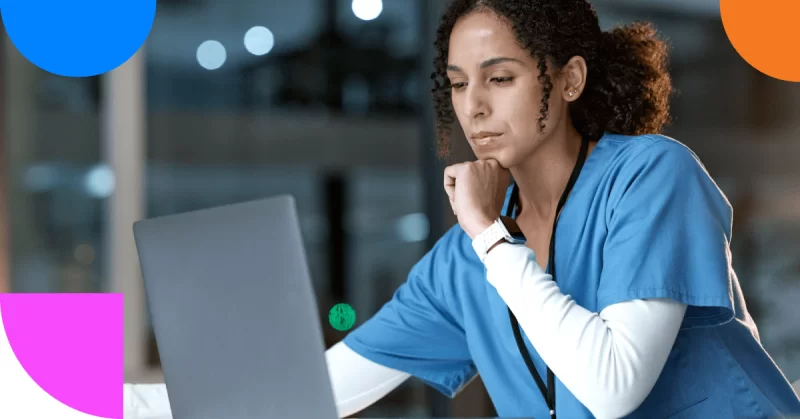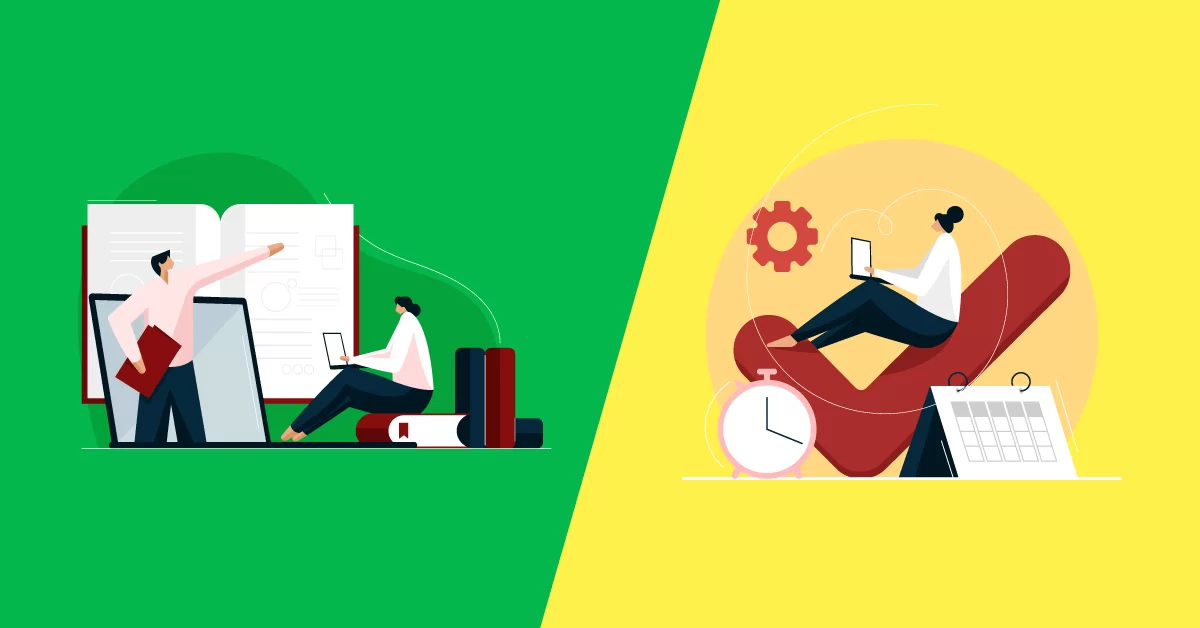
Do you like microbes? If not, don’t worry because microlearning has nothing to do with them, and is perfectly safe for your health.
Microlearning Definition
Microlearning (from the Greek word “micro” meaning small) is all about getting your eLearning in small doses, as tiny bursts of training material that you can comprehend in a short time (contrast with the hefty tomes you had to read at school to study a subject or the typical content-heavy eLearning class — which would be classified as “macro” learning).
As with most eLearning related terms there is some vagueness into it, or rather a flexibility if you wish. People use it to refer to several different ways of learning. All, however, share a few common characteristics to a greater or lesser extent:
- Microlearning is performed in short time bursts.
- It requires little effort from individual sessions.
- It involves simple and/or narrow topics.
All of the above make microlearning a natural fit for mobile learning, and while the two indeed go well together, there’s nothing that says microlearning has to be confined to mobile devices (or conversely that mobile devices can’t serve as platforms for macro learning just as well).
Here are some real world microlearning examples to help you understand its practice:
– watching small instructional videos on YouTube.
– flashcard learning: this involves applications that present the learner with small cards (flashcards) with limited content such as new foreign language words, parts of the human anatomy, countries, chemical elements, etc., to aid in memorizing them.
– solving mini training quizzes
– receiving small nuggets of information through email, sms, IM, etc. (e.g. “word of the day”)
Of course learning, and by extension micro eLearning, is not just about consuming content. Here are a couple of examples of microlearning being practiced by having the learners produce their own content:
– learning to write in a new language, or learning creative writing, by having to compose small sentences.
– learning how to draw by being given a theme that you have to sketch quickly (similar to the “Draw Something” game for iOS).
Benefits of Microlearning
Micro eLearning is not just a byproduct of our short attention spans in the internet age or a subpar eLearning methodology for when we don’t have much time. In fact science backs it up as a credible and effective method of learning.
Research has shown that we learn more (and retain it better) when we study in short focused bursts than when we’re forced to sit through hour long classes — but of course your younger self that was bored to tears at school knew that already.
It just so happens that microlearning is also a great fit for the modern age, when everybody has a mobile phone, and lots of people have plenty of dead time, such as long commutes to work.
And while primitive forms of microlearning such as flashcards and quiz books have been known for over a century, when combined with modern eLearning they get even more powerful, as they get to tap into vast content repositories, add multimedia elements, employ gamification strategies, or take advantage of techniques such as spaced repetition (where content is shown to the learner at specific intervals that enhance its retention).
Disadvantages of Microlearning
That said, microlearning is not the be-all end-all solution that will replace all other forms of eLearning as it has its own share of compromises and disadvantages.
With its emphasis on small isolated chunks of learning, it is not so great when it’s essential to have a holistic view of the training material, and be able to connect disparate elements of it into one coherent picture.
For example, while doctors frequently employ microlearning to memorize medical terms, nobody seriously suggests that it’s a credible method to study pathology. Sometimes you just have to soldier through an extensive body of material and understand it thoroughly, and microlearning is unsuited for that use case.
In general, microlearning is unsuited when there’s a large body of material that needs to be studied and comprehended in detail. So while it would be great in order to learn “business English” or some other dedicated vocabulary, it would’t work for learning how to speak English properly. Or, in the same vein, while microlearning would work to learn the timeline of events in European history, it wouldn’t work to study its deeper motives, interactions and undercurrents.
Again, the above are not meant to dismiss microlearning in the least. Just to show that it has a specific place in a broader range of eLearning methodologies.
That said, that place is big at the moment, and will only get bigger, as microlearning is, as we said, a natural fit for mobile learning, and mobile use is poised to dominate desktop internet use.
In this new landscape, microlearning will be a permanent fixture in eLearning, as it hits all the sweet spots:
– It’s fun and engaging (by keeping it short and taking advantage of multimedia and gamification)
– It works (people remember stuff they’ve been taught through microlearning better)
– It’s casual (you can do it anywhere and it doesn’t demand too much of your time)
Last, but not least, one of the microlearning benefits is that, while it can be implemented by itself effectively, it also works as part of a larger eLearning offering, that is as a casual/micro companion to traditional training.
And if you want us to summarize this post in a microlearning sized chunk, that would read something like:
“Microlearning: it’s learning in tiny chunks and short bursts of time. Great way to learn in the small. Goes well with mobile. Will only get bigger in the future.”.
Want to learn how you can leverage your favorite platform to offer this type of learning? Learn all about how you can implement microlearning with eFront!
Or, head over to TalentCards, Epignosis’ powerful microlearning platform that lets you create and deliver your bite-sized courses in the form of learning cards!


